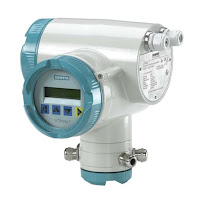INSTRUCTIONS
WARNING: Actuators with preloaded springs are under tension. They can be identified by three long bolts protruding from the bottom of the actuator. These should be removed last, and installed first upon re-assembly.
- With the actuator removed from the valve, unscrew the nuts and bolts on the diaphragm case.
- Lift off the top diaphragm case.
- Remove the diaphragm plate assembly consisting of the diaphragm plate, diaphragm, and actuator stem from the actuator case.
- Remove the springs.
- Clamp the bottom section of the actuator stem into a vise using protective jaws, ensuring the actuator stem is not damaged.
- Remove the collar nut.
- Remove the diaphragm plate from the actuator stem, flip upside-down and place them back onto the actuator stem.
- Re-install the collar nut.
- If necessary, apply a suitable lubricant to the actuator stem.
- Install the diaphragm plate assembly together with the actuator stem pointing downward into the bottom diaphragm case.
- Place the springs onto the diaphragm plate, centering them in the intended recesses. The final actuator spring range will determine the appropriate springs to be installed.
- Place the top of the actuator case onto the assembly. Ensure that the air connections on the cases are correctly aligned with each other.
- Fasten the top and bottom diaphragm cases together using the nuts and bolts. Observe tightening torques.
The Type 3271 pneumatic rolling diaphragm actuator is designed for all industrial applications. This actuator is a linear motion device ideal for valve sizes ranging from the micro-flow valves to large 20"+ globe control valves.
The Type 3277 pneumatic rolling diaphragm actuator with an integrated accessory attachment area is designed for all industrial applications. This actuator is a linear motion device ideal for valve sizes ranging from the micro-flow valves to 4" globe control valves.
The thrust force of the actuator depends on the actuator area, pneumatic supply pressure, spring stiffness, distance traveled, initial compression of the spring, the number of springs internal to the actuator, etc.
The Type 3271 and Type 3277 Pneumatic Actuators contain a rolling diaphragm and internal springs and have the following special features:
- Low overall height
- Powerful thrust at high stroking speed
- Low friction
- Various bench ranges by varying the number of springs or
- their compression
- No special tools required to change the bench range or to
- reverse the direction of action (also version with handwheel)
- Permissible operating temperatures from –60 to +120 °C
For more information on SAMSON Controls, contact Ives Equipment by calling 877-768-1600 or visiting https://ivesequipment.com.







